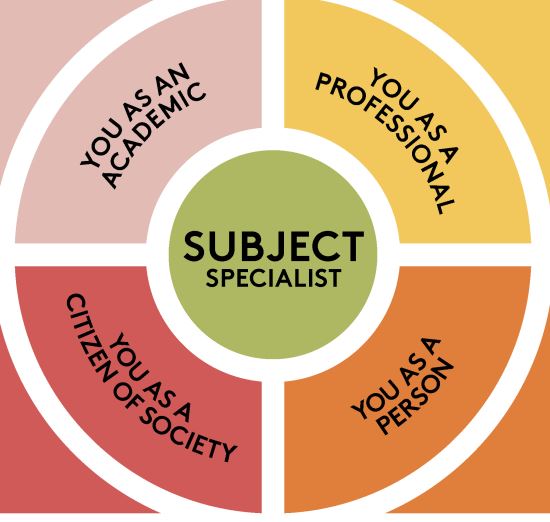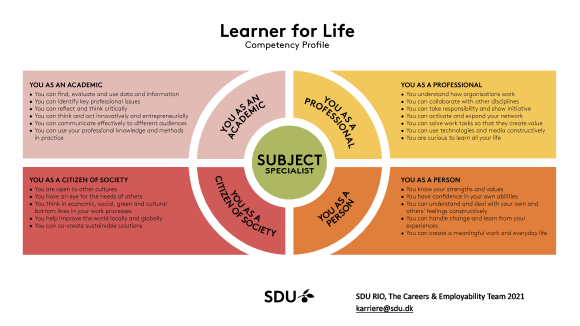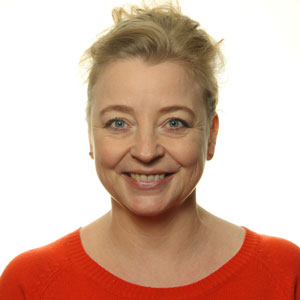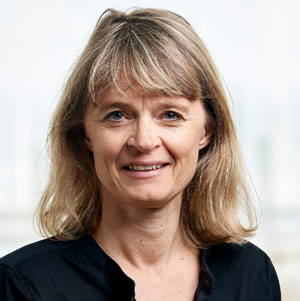
THEME: TAL2022 - Interview with Tine and Linette about the Learner for Life Model
Interview with Tine Lynfort Jensen and Linette Sønderby about their presentation at TAL2022, where they presented the Learner for Life Model - developed by SDU RIO Careers & Employability team.
Tell us about SDU RIO Careers and Employability team
We are career and employability consultants in the team Careers and Employability. We support teachers, leaders, and students at SDU, and we collaborate with Study Programmes in developing and integrating employability into curricula. To support our work, SDU RIO Careers and Employability team developed the Learner for Life Model (LfL) model, which we discuss below.
Why did SDU RIO Careers and Employability team design the LfL model?
Our team works with developing student competences as they are fundamental for graduate employability. Over the years, we have become increasingly aware of the difficulties students and graduates experience translating their competences and teachers’ frustrations not knowing how to best help students with this process.

We developed the LfL model as a point of departure for dialogues with SDU leadership at different Faculty levels, students, and teachers about the most important competences for employability, lifewide and lifelong learning. This includes a complex array of competences, particularly when you consider SDU’s various educational strategies including digital competences, entrepreneurship and innovation, lifelong learning, SDGs, internationalization, and employability.
Therefore, we designed the LfL model to help us, teachers and students navigate what is known about 21st century competences, demands from the labour market and SDU’s different educational strategies.
Talk us through the design of the LfL model
From our conversations with students, we were aware that in general students think the subject specialist competences are what lead to their employment but there are more competences they need to develop. We knew the subject competences should be at the core of the model because that’s the students’ point of departure. Besides these, we included academic and personal competences, and we embraced the need for a wider selection of competences, adding professional and citizen competences. These are the explanations for each of the five elements in the LfL model:
- You as a subject specialist
This is the basis and core element of the model. Here, focus is put on theories, concepts, methods and tools that students learn in their courses through the specific study program. - You as an academic
In combination with being a subject specialist, students also develop a set of general academic competencies that they can activate in their work with knowledge, tasks and in problem solving in and outside academia. - You as a person
Besides the educational profile, it is important to work with the more personal competencies that all students and graduates have. It concerns the way they handle situations, the values and strengths they have. Students can develop personal competencies from both the educational and the everyday life. - You as a professional
Here, the focus is put on how students often find themselves in situations, where they have to collaborate with others and activate their competencies in different kinds of practical settings. Students and graduates will experience being part of organizations and groups acting as a professional using their different kinds of competencies in relevant ways. - You as a citizen
The University of Southern Denmark has a specific focus on the UN Social Development Goals and therefore an ambition to develop a citizen mindset in students and graduates. The category sheds light on competencies that are important to develop in order to contribute to societal value and well-being.

In this version of the model (pdf-version of the model), we include lists of possible competences for four categories of competences: academic, personal, professional and citizen, we left the core subject category for the subject areas to develop. We built up the lists of competences like a taxonomy starting with knowledge and skills and moving towards more action orientated competences. We are currently working on version 2 of the model where we are following taxonomic thought even more strictly, switching some competences to other categories, and including references such as the Inner Development Goals (IDGs), which are an attempt to describe the skills needed to be able to work with the global goals. Norman Jackson was inspired by IDGs and has developed his work around them. We too have gained a lot of inspiration from the IDGs.
An example of the Faculty of Science's work, in collaboration with RIO, integrating the LfL model into the professional environment
Over the years, the Natural Science Faculty has experienced that their students find it difficult to put their competences into words and to communicate them to future employers. A lack of ability that, for some graduates, is reflected in the length of their graduate unemployment period.
It is also important for the Faculty that the students continuously reflect on their learning outcomes and competencies during their education. It creates meaning and motivation for the student to be aware of their progress with studyability as well as their professional, academic, and personal progress. They also need to develop their ability to translate and understand how the learning can create value in future subjects and outside the classroom in society. With the LfL model as a starting point, we connected a competence learning course on itslearning, to all natural science educations from the 1st semester. Over a minimum of 2 sessions per semester, the students either via online self-paced courses and/or in combination with workshops have time to reflect on their learning and put it into perspective. In parallel the leaders of the study programs which include the competence portfolio, support their teaching colleagues identifying and extracting learning and competences from their different courses to the benefit of the students.
The LfL model is a central element in the process, where the students collect their acquired knowledge, skills and competences in the portfolio and become aware of and experience the progression in their learning. By placing the LfL model at the core of the student journey, the aim is to increase students' awareness and focus on developing relevant competences that are in demand by the future labor market. After completing their education, the students are left with a competence profile they can use as a starting point.
Teach the Teacher
The Teach the Teacher course was initially developed in collaboration with the Humanities Faculty to support integration of employability elements into curriculum. From 2020, we have rolled out the course with 9 teachers from the Humanities, Natural Sciences and Health Faculties. The concept consists of 3-4 online workshops with one or two teachers, to inform and support how they can plan to integrate employability elements into a specific course, followed by evaluation meetings with the teacher and typically a study leader to secure further implementation. In the workshops, we introduce theories about employability, transfer of learning and competences. The LfL model is used as a central tool in the course. The teacher chooses one or two competences from the LfL model that they see as relevant for the students to work with as part of a specific course within their study program. The teacher introduces the competence to the students in combination with a specific task and a concrete context they need to train the competence within. After the competence training activity, we help the teacher organize reflection sessions with the students with the purpose to identify how they have developed the competence and in which new contexts in both coming courses and daily life they can transfer their experiences and competence in meaningful ways.
Some further examples of how we use the LfL model in practice:
- Individual competence work as part of a career counseling session
- As a tool in competence workshops both online and physical (our own workshops, as part of courses/teaching, as designed workshops for specific study programs connected to curriculum)
- As part of our own Career Management Skills courses to help students with focus on which competences they bring into the course and the competences they develop through the course
- As a communication tool in dialogue with academic staff, study leaders, study programs etc to start a dialogue about the competences that study programs want to or already develop at their students and graduates as a supplement to the other more formal descriptions of the knowledge, skills and competences from the course and study program descriptions
- As our own communication material as a Career Service unit at SDU to give our vision of the employable student and graduate from SDU
You can read more about the conception, design and application of the LfL model in this article:
Jensen T. L., Sønderby L., and Bækksgaard, K. 2021. Learner for Life modellen – et competence baseret værktøj til studerende, vejledere og undervisere. Proceedings from the conference TAL2021. University of Southern Denmark.
Where can teachers access the model and what support is available from RIO to facilitate its application?
Contact SDU RIO Careers and Employability by karriere@sdu.dk.
Our team is working on making material about LfL available on SDUNet in the 2023, so during the year academic staff will be able to access the model, slides and publications.

